Special Report
Every Rank in the United States Navy, and How Much They’re Paid
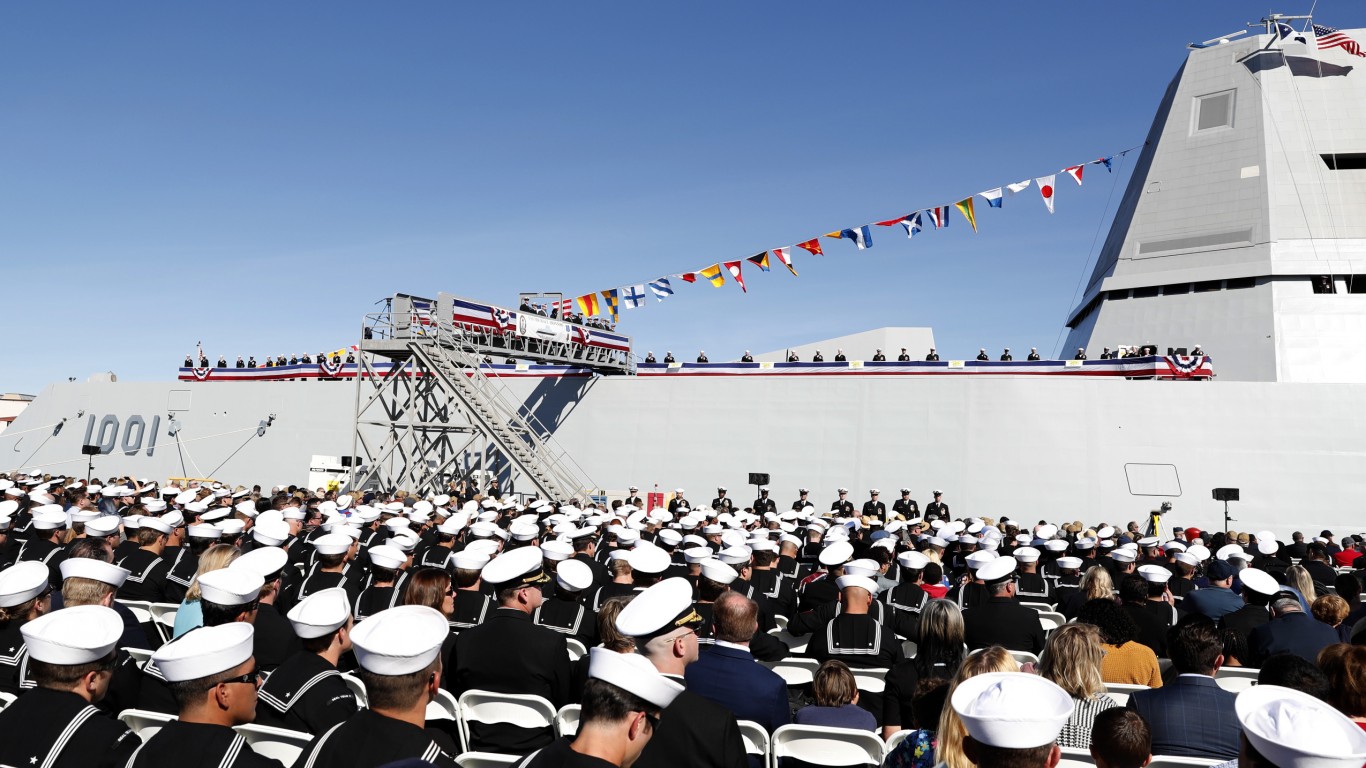
Published:

The United States Navy is the largest in the world. Like other branches of the military, it is highly organized by a vast hierarchical structure. Even for military personnel in other branches of the armed forces, U.S. Navy ranks can be a bit confusing.
To be fair, they are arranged differently than in other branches. For example, enlisted service members, who are responsible for carrying out orders (as opposed to commissioned officers, who give orders) are arranged by rate (pay-grade) and specialty, rather than by rank. The pay structure (E1-E9) of enlisted Navy ranks is broken into three levels: apprenticeships (E1-E3), petty officers (E4-E6), and chief petty officers (E7-E9).
24/7 Wall St. reviewed every U.S. Navy rank and insignia from Veteran.com. A sailor’s insignia or rating badge – signifying a combination of pay-grade and specialty – is worn in various uniform locations depending on their rate.
The lowest rate in the Navy is a seaman recruit (SR/E-1), who is assigned to a particular occupational field including seamen, firemen, hospitalmen, airmen, or constructionmen. Once recruits are promoted to seamen (SN/E-3) they can take on basic responsibilities. The first tier of non commissioned petty officers, on the other hand, must have leadership skills and technical expertise.
Master chief petty officer of the Navy (MCPON) is the most senior enlisted member, which is equivalent to sergeant major of the Army. Above enlisted service members are warrant officers, commissioned officers, and admirals. Warrant officers are technical experts in a particular field; this includes pilots, electronic technicians, surgeons, and carpenters. Commissioned officers must graduate from naval officer training and excel in advanced leadership roles.
Beyond commissioned officers are various admirals, who command major sea and shore operations, fleets of ships, or regional fleets. While four-star admirals are usually the highest ranking members of the Navy, a temporary five star rank called fleet admiral (FADM) is possible but only appointed during wartime. While there have been 237 four-star admirals in Naval history, there have only been four fleet admirals, all of whom were appointed during World War II. Here are 50 of the most decorated war heroes in American history.
Click here to see how much every rank in the US Navy is paid

1. Seaman Recruit (SR/E-1)
[in-text-ad]

2. Seaman Apprentice (SA/E-2)

3. Seaman (SN/E-3)
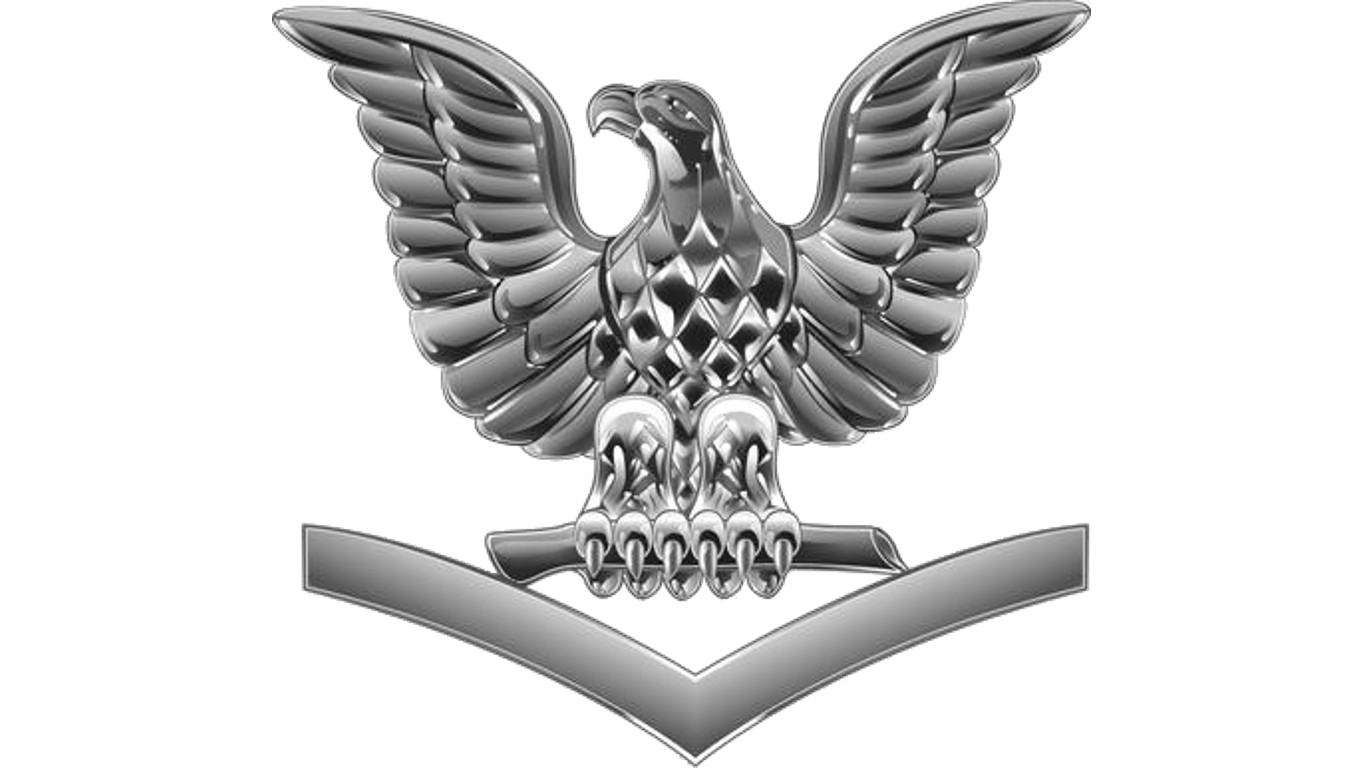
4. Petty Officer Third Class (PO3/E-4)
[in-text-ad-2]

5. Petty Officer Second Class (PO2/E-5)
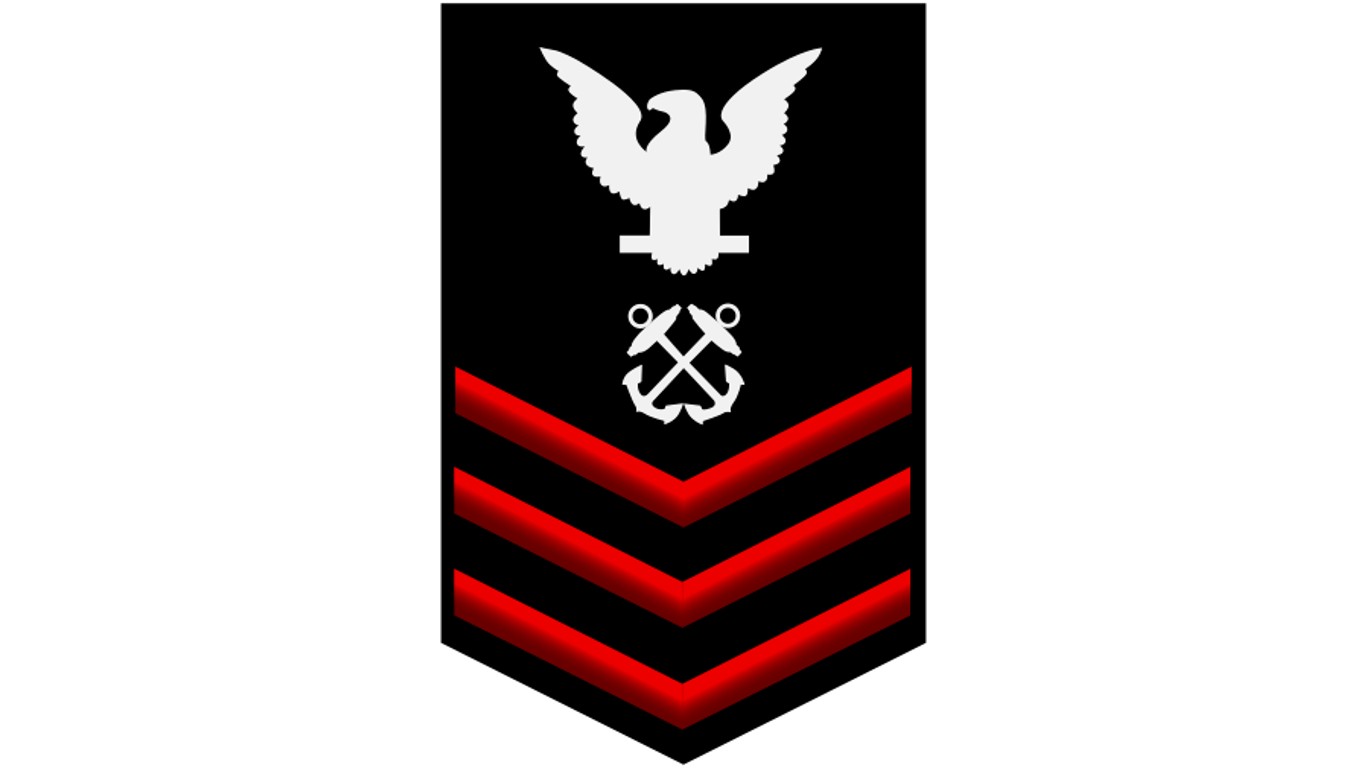
6. Petty Officer First Class (PO1/E-6)
[in-text-ad]

7. Chief Petty Officer (CPO/E-7)
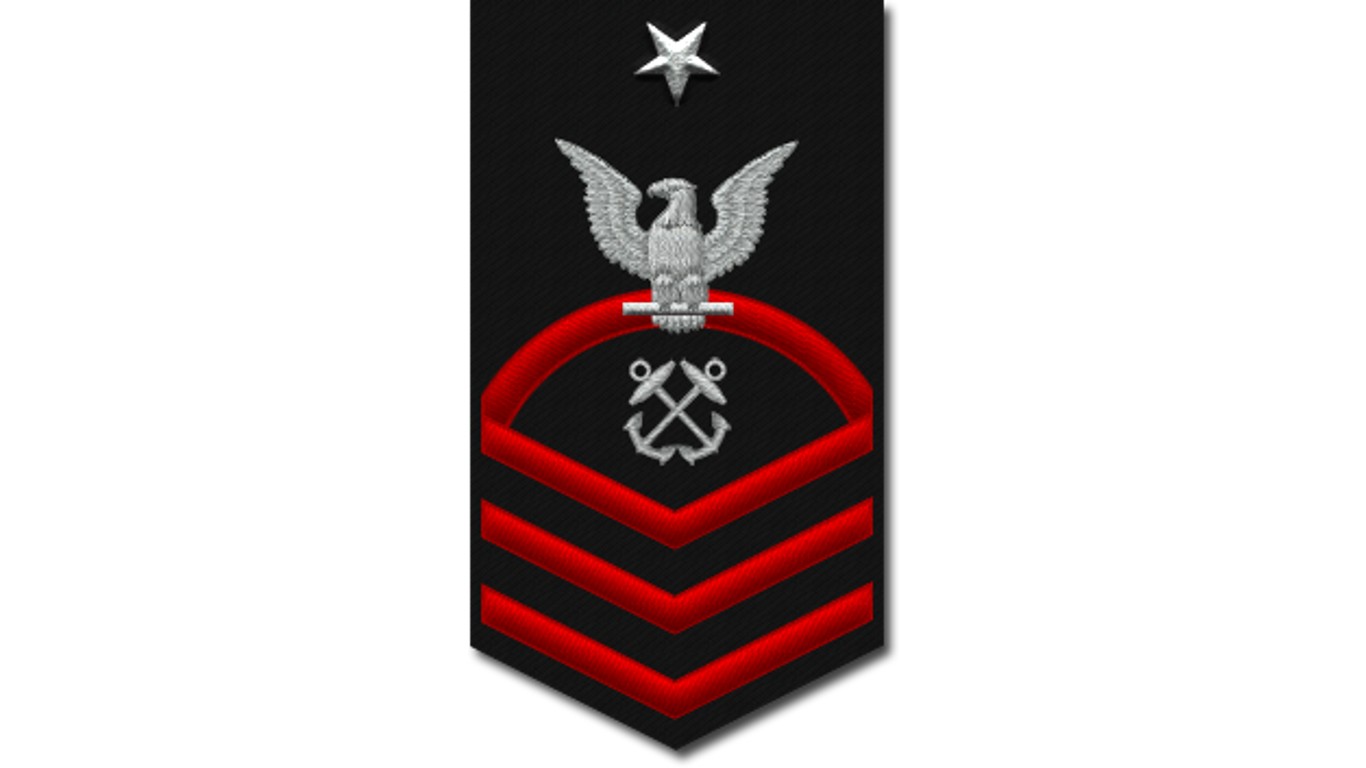
8. Senior Chief Petty Officer (SCPO/E-8)
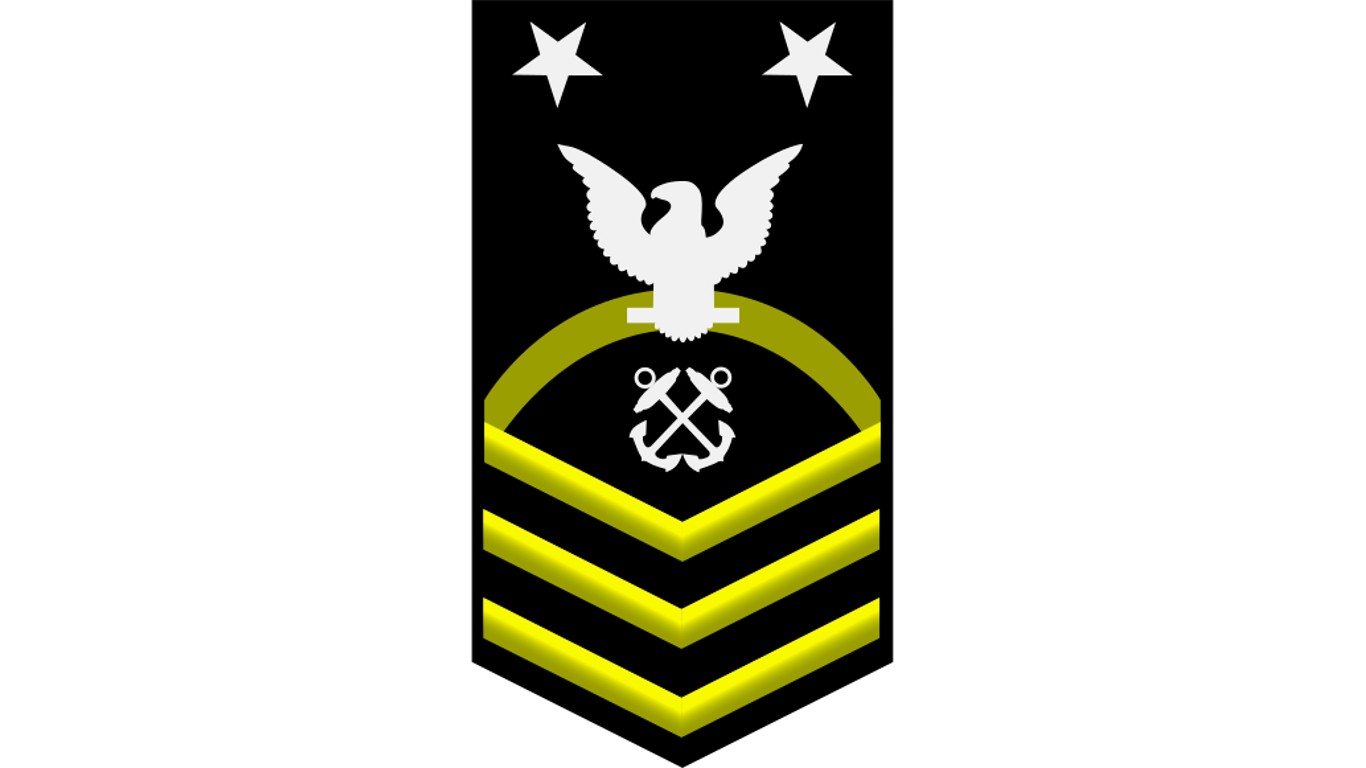
9. Master Chief Petty Officer (MCPO/E-9)
[in-text-ad-2]
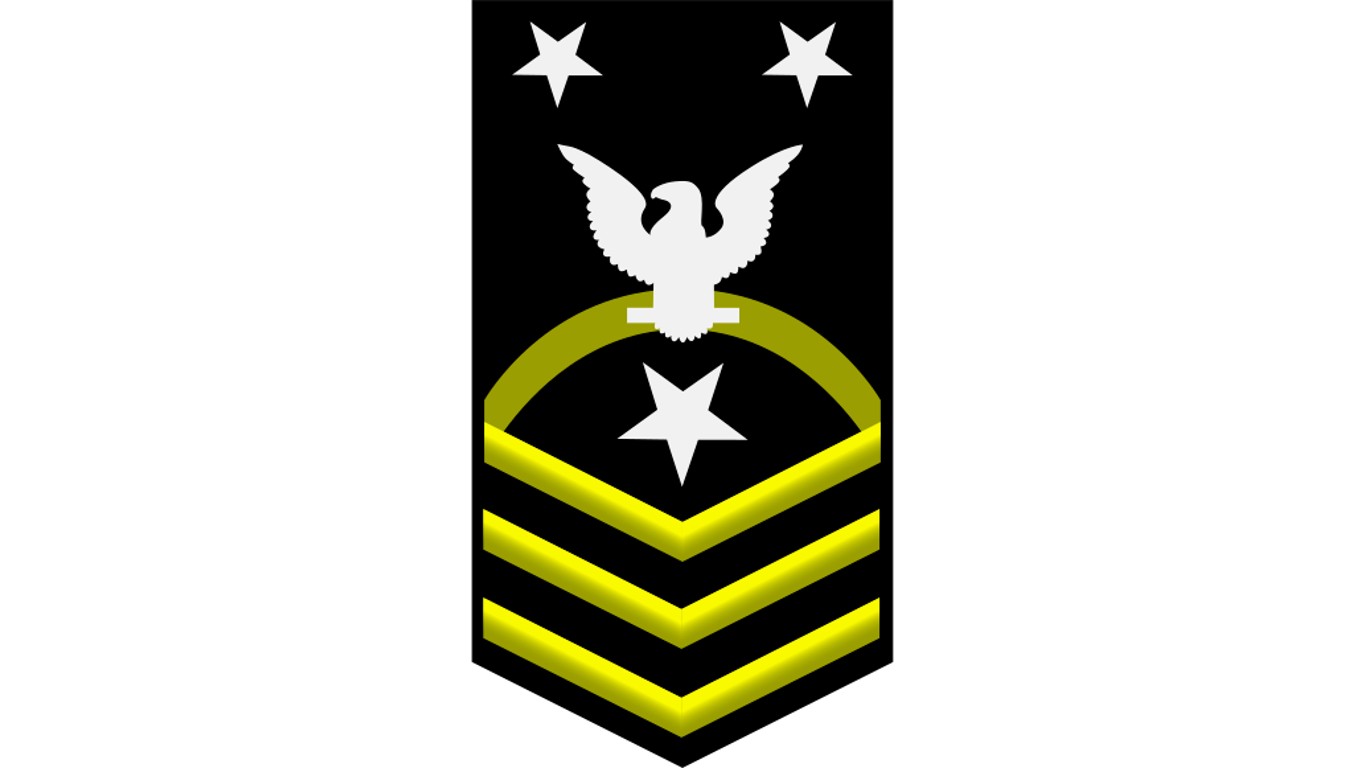
10. Command Master Chief Petty Officer (CMC/E-9)
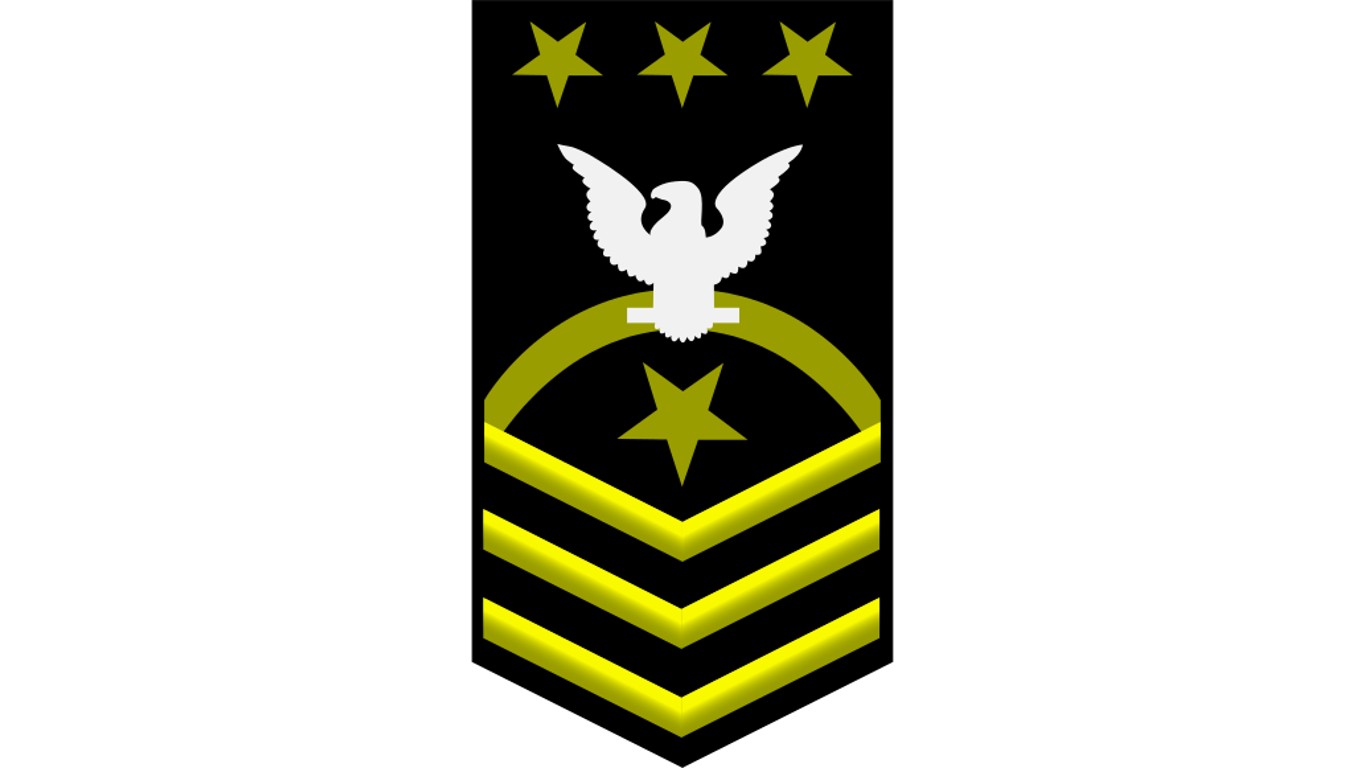
11. Master Chief Petty Officer of the Navy (MCPON/E-9)
[in-text-ad]
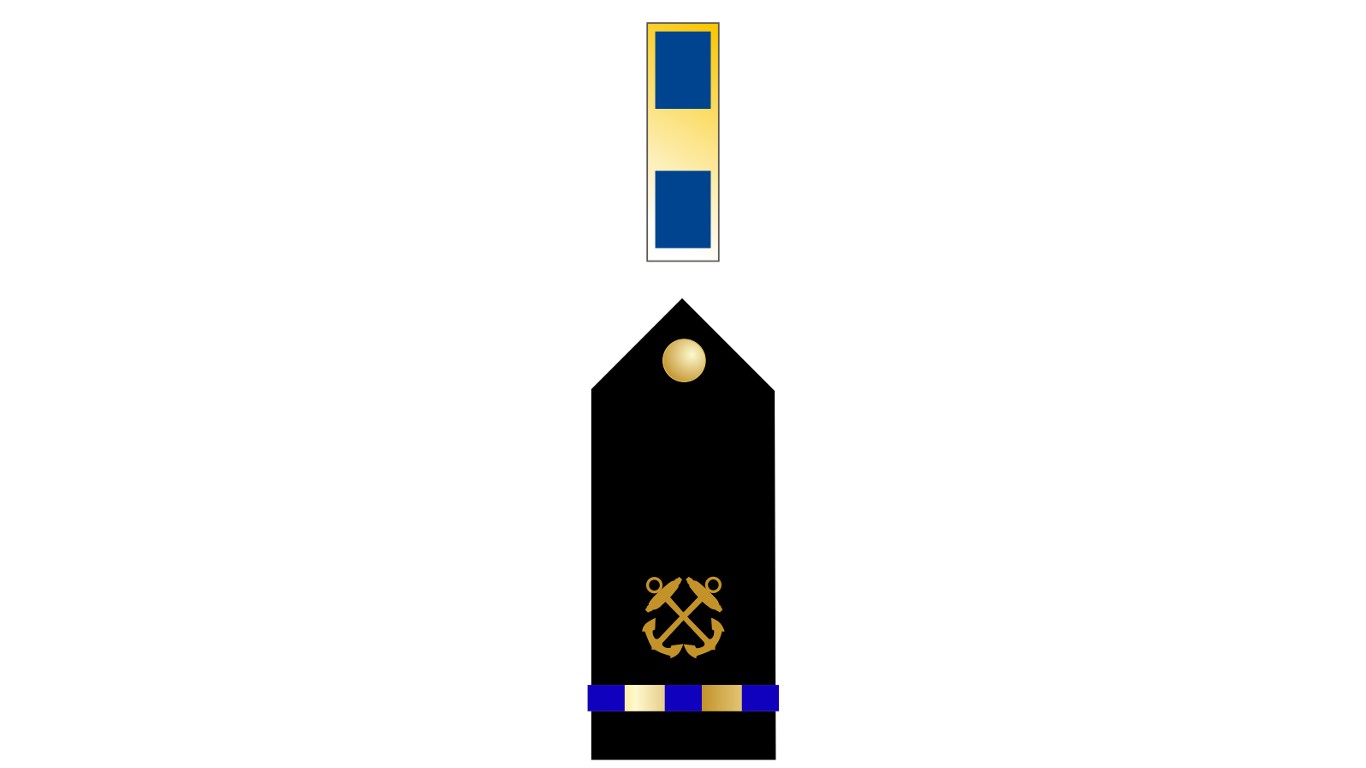
12. Chief Warrant Officer (CWO-1)

13. Chief Warrant Officer (CWO-2)
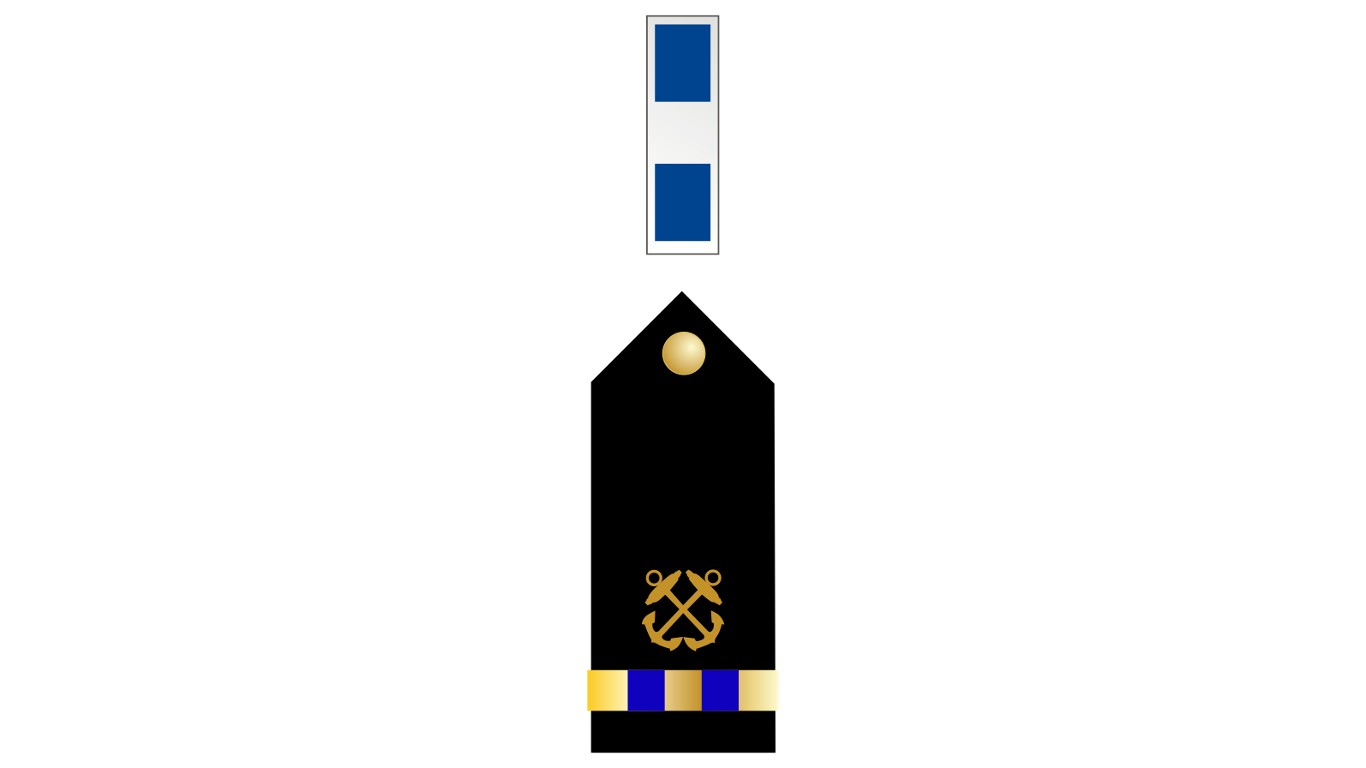
14. Chief Warrant Officer (CWO-3)
[in-text-ad-2]
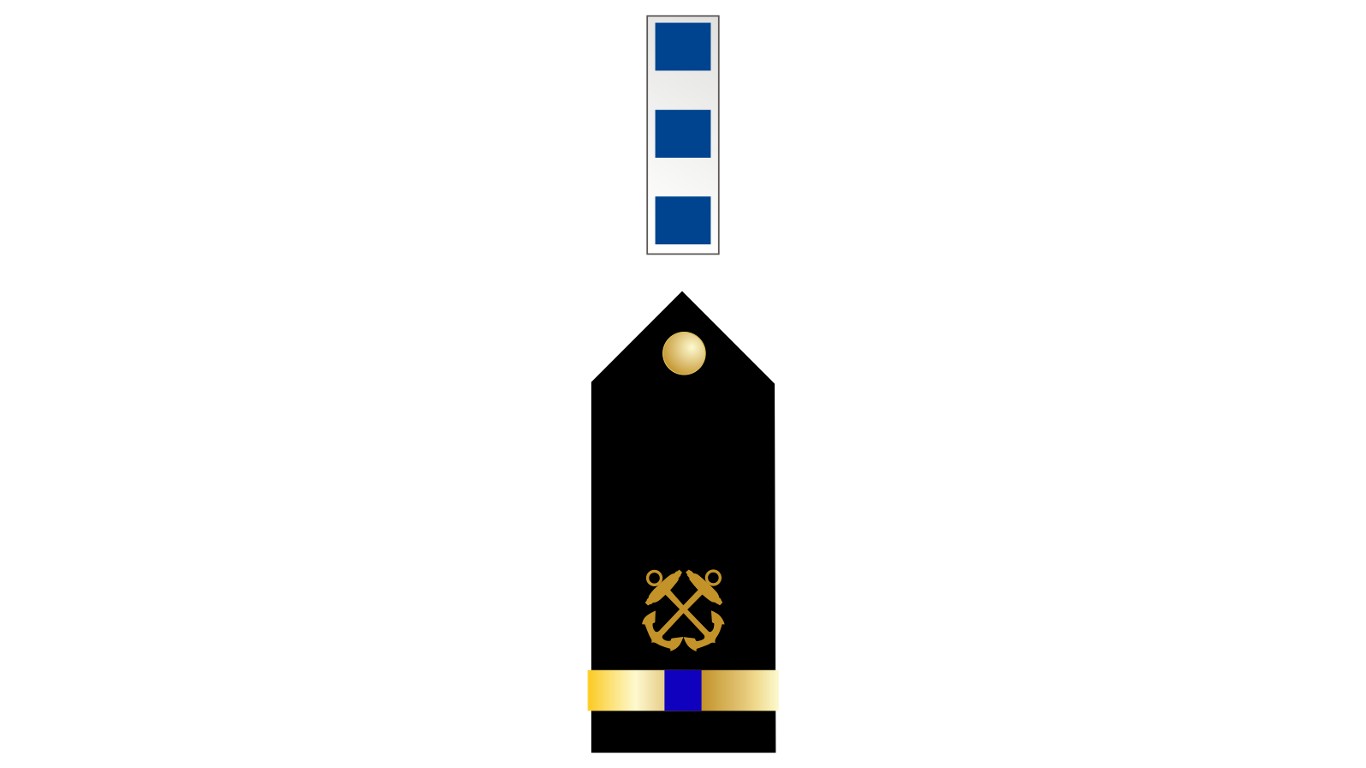
15. Chief Warrant Officer (CWO-4)
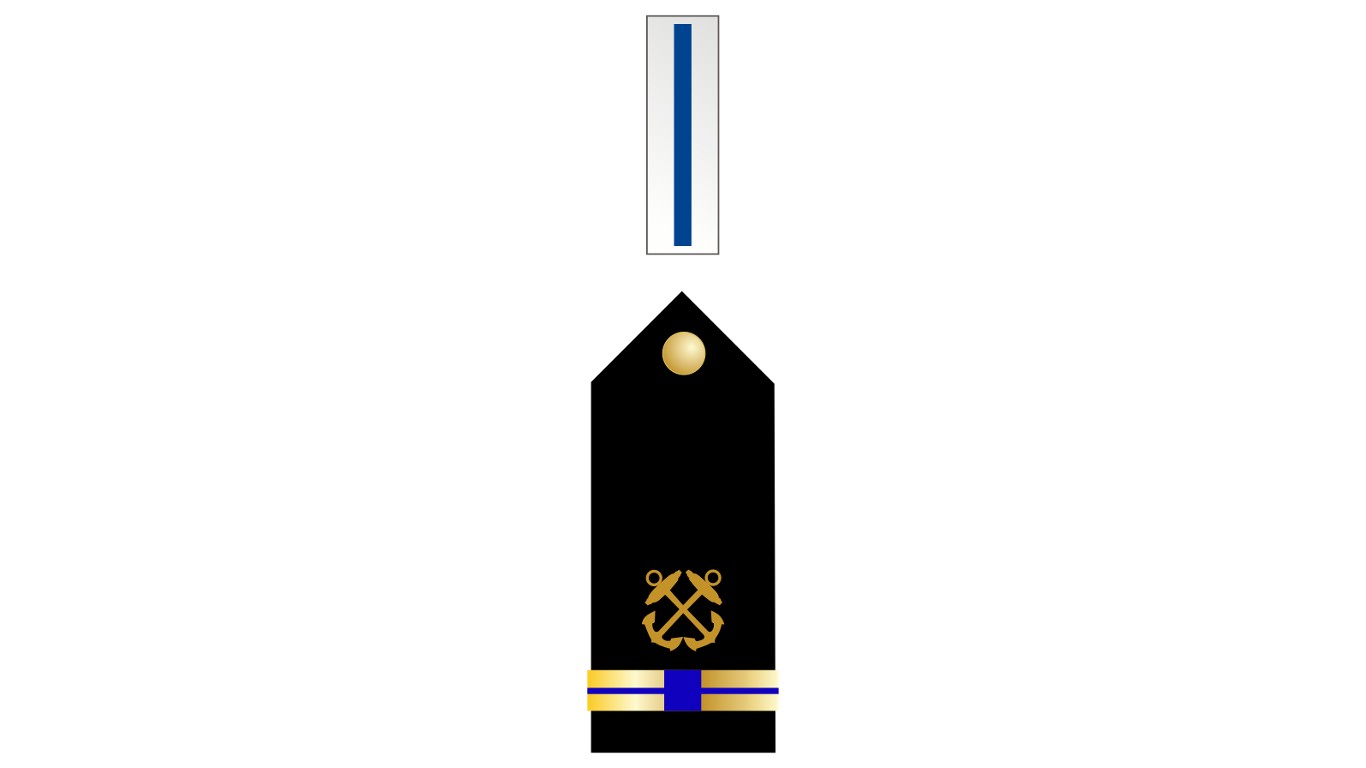
16. Chief Warrant Officer (CWO-5)
[in-text-ad]

17. Ensign (ENS/O-1)

18. Lieutenant Junior Grade (LTJG/O-2)
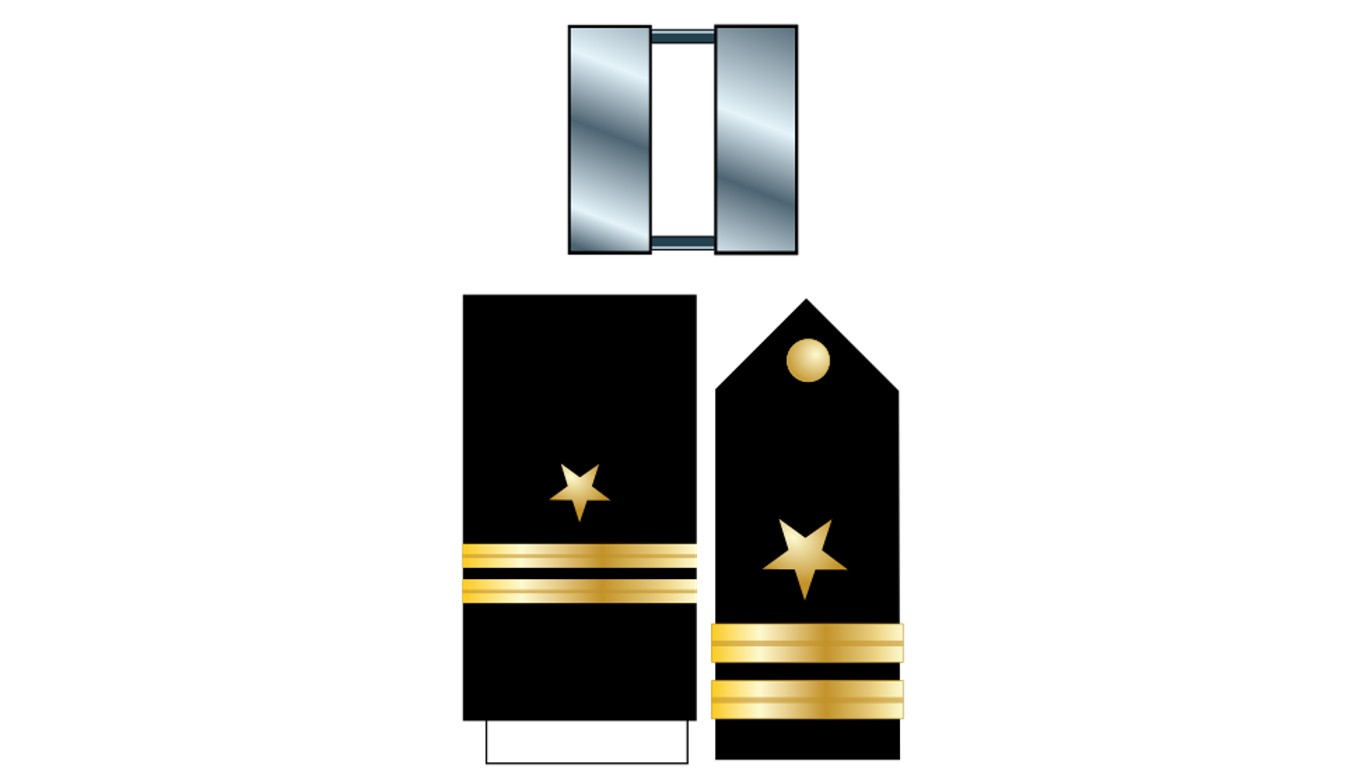
19. Lieutenant (LT/O-3)
[in-text-ad-2]

20. Lieutenant Commander (LCDR/O-4)

21. Commander (CDR/O-5)
[in-text-ad]
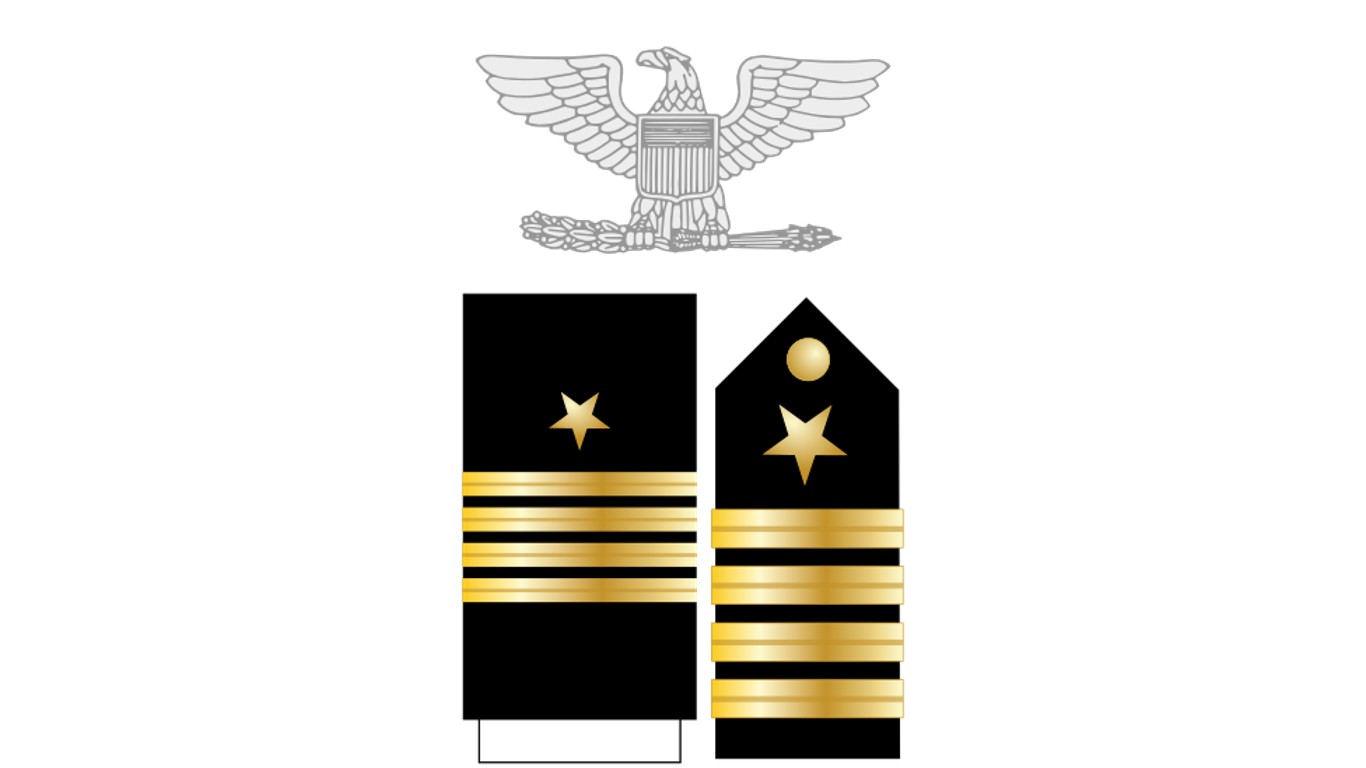
22. Captain (CAPT/O-6)

23. Rear Admiral Lower Half (RDML/O-7)

24. Rear Admiral Upper Half (RADM/O-8)
[in-text-ad-2]
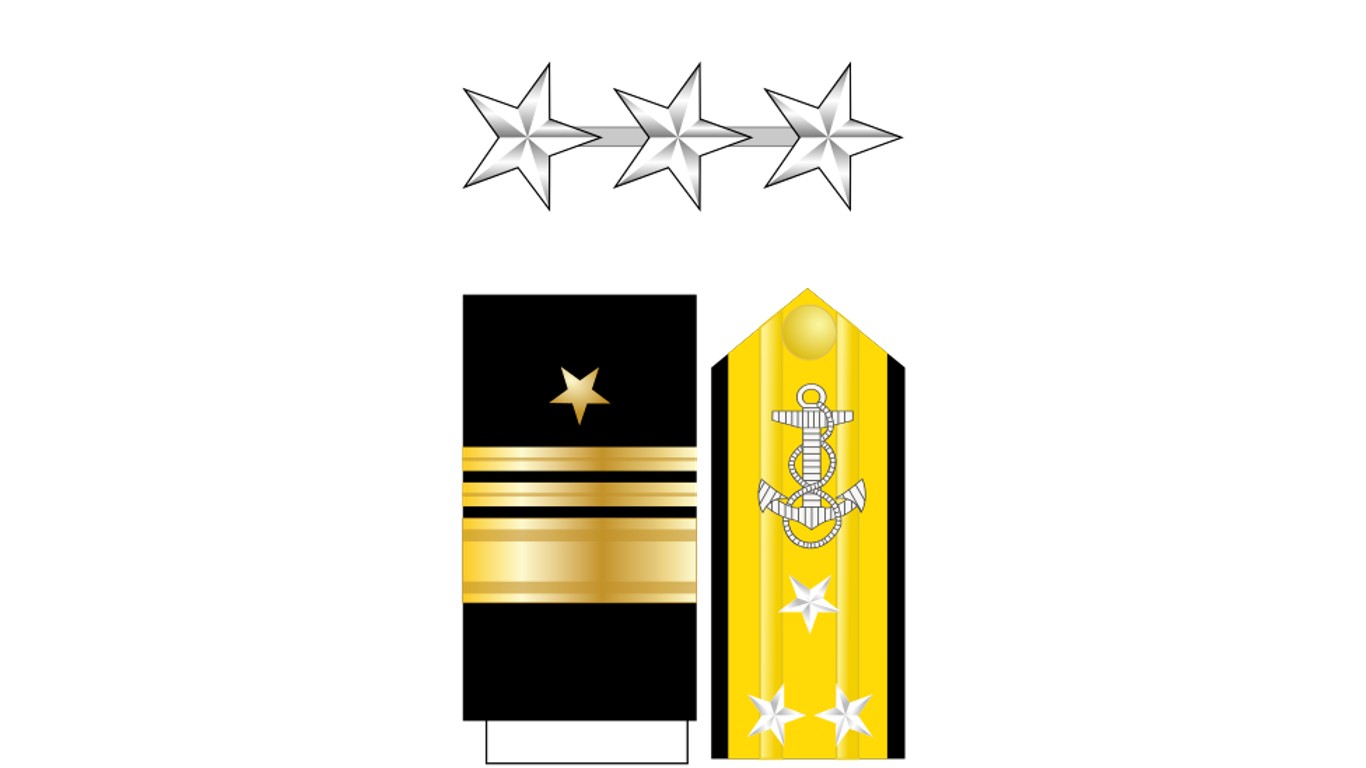
25. Vice Admiral (VADM/O-9)
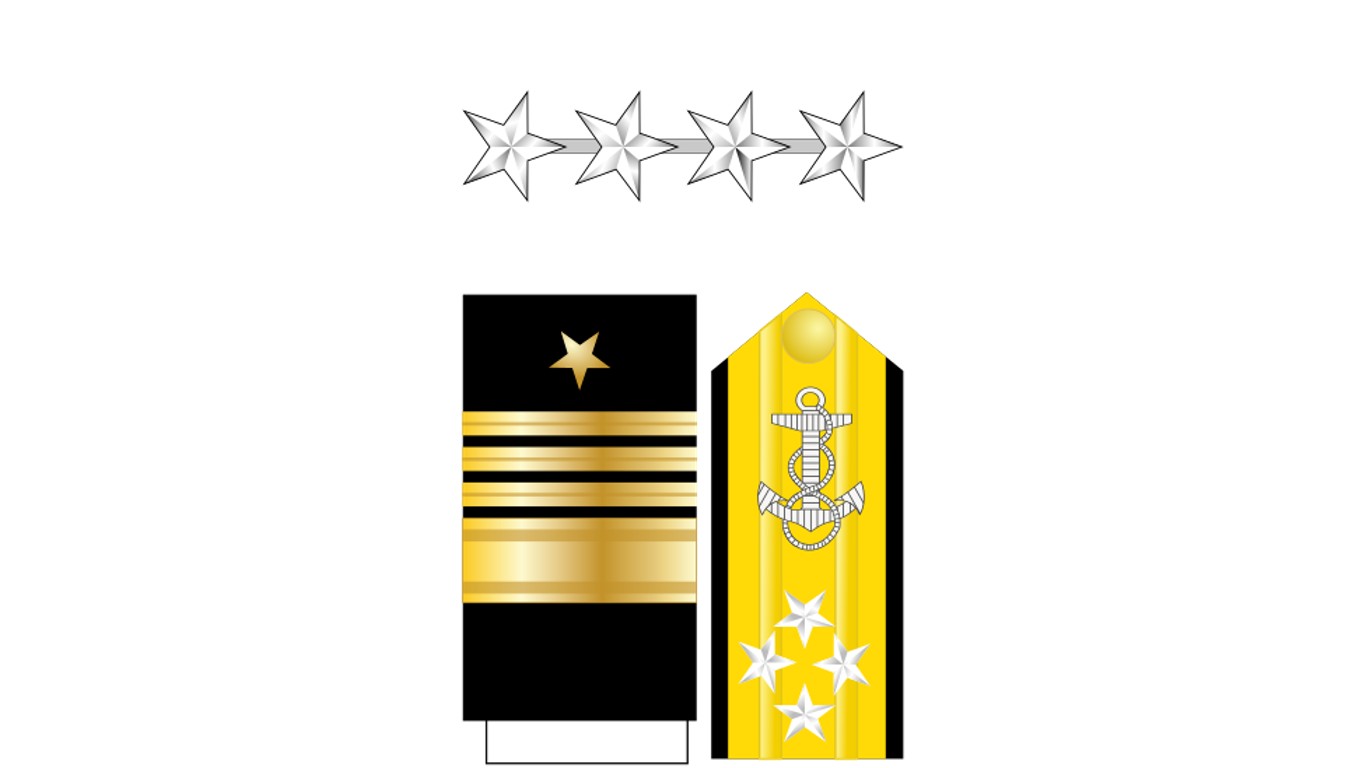
26. Admiral (ADM/O-10)
[in-text-ad]

27. Fleet Admiral (FADM)
Start by taking a quick retirement quiz from SmartAsset that will match you with up to 3 financial advisors that serve your area and beyond in 5 minutes, or less.
Each advisor has been vetted by SmartAsset and is held to a fiduciary standard to act in your best interests.
Here’s how it works:
1. Answer SmartAsset advisor match quiz
2. Review your pre-screened matches at your leisure. Check out the advisors’ profiles.
3. Speak with advisors at no cost to you. Have an introductory call on the phone or introduction in person and choose whom to work with in the future
Get started right here.
Thank you for reading! Have some feedback for us?
Contact the 24/7 Wall St. editorial team.